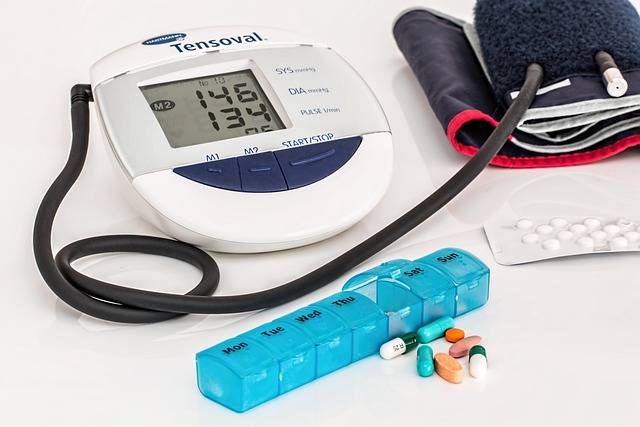Chronopharmacology: Timing Medicine for Maximum Impact
The intersection of time and medicine is revolutionizing how we approach treatment. Can the efficacy of your medication be enhanced simply by taking it at the right time of day? This groundbreaking field of chronopharmacology suggests that timing is indeed everything when it comes to healthcare.

The Circadian Connection
At the heart of chronopharmacology lies the human circadian rhythm, our internal 24-hour clock that regulates various physiological processes. This biological timekeeper influences everything from hormone production to metabolism, and even our susceptibility to certain diseases. By understanding these rhythms, scientists are uncovering how the timing of drug administration can significantly impact its effectiveness.
Research has shown that our bodies metabolize drugs differently throughout the day. For instance, the liver’s ability to process medications fluctuates, peaking in the morning and declining in the evening. This variation can affect how quickly a drug is absorbed, distributed, and eliminated from the body, ultimately influencing its therapeutic impact.
Optimizing Treatment for Chronic Conditions
Chronopharmacology has particularly promising implications for managing chronic conditions. Take hypertension, for example. Blood pressure naturally dips at night and rises sharply in the early morning hours, a phenomenon known as the morning surge. By timing antihypertensive medications to coincide with this surge, healthcare providers can potentially offer more effective blood pressure control and reduce the risk of cardiovascular events.
Similarly, for individuals with rheumatoid arthritis, symptoms often worsen in the early morning. Administering anti-inflammatory medications before bed allows the drug to reach peak effectiveness just as symptoms are at their worst, providing better relief and improved quality of life for patients.
Personalizing Cancer Treatment
In oncology, chronopharmacology is opening new avenues for personalized treatment. Cancer cells, like healthy cells, have their own circadian rhythms. By administering chemotherapy drugs at specific times when cancer cells are most vulnerable and healthy cells are more resistant, oncologists can potentially enhance treatment efficacy while reducing side effects.
Studies have shown that the timing of chemotherapy can significantly impact patient outcomes. For instance, a study on colorectal cancer patients found that those who received chemotherapy timed to their individual circadian rhythms experienced better tumor response rates and fewer side effects compared to those on standard treatment schedules.
Challenges and Future Directions
While the potential of chronopharmacology is exciting, implementing these principles in clinical practice presents several challenges. Individual variations in circadian rhythms, influenced by factors such as age, genetics, and lifestyle, make it difficult to establish one-size-fits-all recommendations. Additionally, the complexity of timing multiple medications for patients with comorbidities requires careful consideration and management.
To address these challenges, researchers are exploring innovative approaches. Wearable devices that monitor physiological markers could provide real-time data on an individual’s circadian rhythms, allowing for truly personalized medication timing. Additionally, the development of time-released drug formulations could help automate the process of aligning medication delivery with optimal biological windows.
Implications for Public Health
The implications of chronopharmacology extend beyond individual patient care to public health strategies. Consider the annual flu vaccine campaign. Research suggests that the time of day when a vaccine is administered can influence its effectiveness. Morning vaccinations, for instance, have been associated with a stronger immune response in some studies. This insight could potentially improve the overall efficacy of vaccination programs.
Moreover, chronopharmacology could play a role in addressing the growing concern of antibiotic resistance. By optimizing the timing of antibiotic administration, we may be able to enhance their efficacy, potentially allowing for lower doses and reducing the risk of resistance development.
Chrono-Wellness Insights
-
The best time for high-intensity exercise is typically in the late afternoon when body temperature and muscle strength peak.
-
Melatonin production is most inhibited by blue light exposure between 11 PM and 4 AM, making these hours crucial for maintaining a healthy sleep cycle.
-
Insulin sensitivity is highest in the morning, suggesting that larger, carbohydrate-rich meals might be better tolerated earlier in the day.
-
Cognitive performance for most people peaks in the late morning, making this an ideal time for tasks requiring complex problem-solving.
-
The liver is most active in processing toxins during the early morning hours, which is why alcohol consumed late at night can lead to more severe hangovers.
As we continue to unravel the intricate relationship between time and health, chronopharmacology stands at the forefront of a new era in medicine. By aligning our treatments with the body’s natural rhythms, we have the potential to enhance drug efficacy, reduce side effects, and ultimately improve patient outcomes. While challenges remain, the future of chronopharmacology holds promise for more personalized, effective, and holistic approaches to healthcare.





